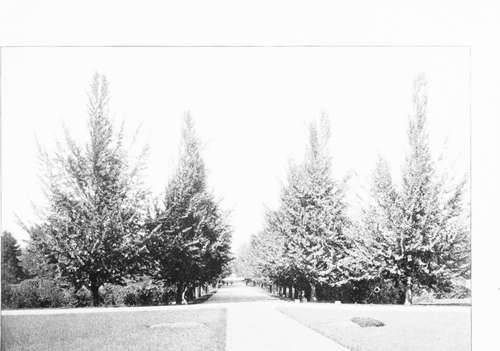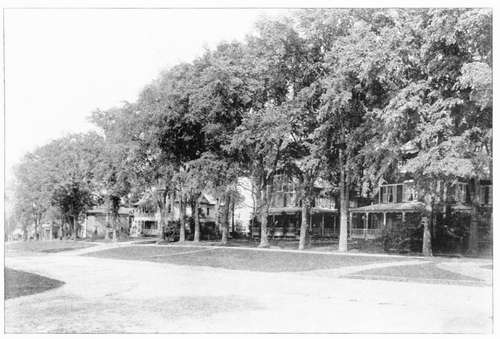Street Planting
Description
This section is from the book "Tree Planting Streets And Highways", by William F. Fox. Also available from Amazon: Tree planting on streets and highways.
Street Planting
There are many reasons why trees should be planted in cities and villages. During the hot days of summer the streets which are shaded by trees are preferred to those which lack this protection. The temperature is much lower; and as the pavements are not exposed to the glare of the sun, there is less of reflected heat. The streets that are lined with shade trees are more attractive to the eye; ami their superiority is readily apparent when compared with those on which there are no trees. The shaded streets being cooler the)' are more desirable for residences, and, other things being equal, property is more valuable and commands higher rents. The air is purer by reason of the foliage, which inhales carbonic acid and exhales oxygen. The leaves absorb the poisonous gases generated in hot weather by the decomposition of animal and vegetable matter, and thus an active source of disease is eliminated. During hot summer days the diseases incidental to that season are not so prevalent in streets and localities which are protected from the heat of the sun by large overhanging trees.* At a meeting of the New York Medical Society a resolution was passed in which the opinion was expressed that " one of the most effective means for mitigating the intense heat of the summer months, and diminishing the death rate among children, is the cultivation of an adequate number of trees in the streets."
The city of Washington is justly known as one of the most beautiful cities in America on account of the seventy thousand trees that adorn its streets; and there are many New England towns famed for their attractive appearance, due largely to the beautiful trees planted by village improvement societies. It is said that Paris has 80,000 shade trees, and that §60,000 are expended annually in caring for them and planting additional ones, Both Washington and Paris have nurseries in which seedlings of desirable species are propagated with special reference to the requirements of street planting. Poorly developed plants or saplings are discarded, and only the straight, thrifty ones are selected for use on the city streets.
*See " Vegetation a Remedy for the Summer Heat of Cities." By Stephen Smith, M. D., LL. D. Appleton's Popular Science Monthly, February, 1899.

Ginkgos.— Avenue Leading To Department Of Agriculture, Washington, D C.

The Elms Of Lenox.
In street planting care should be exercised to select species which, when fully grown, will be of a size suitable to the width of the street; and in making a choice onlv such should be selected as are best adapted to the peculiar conditions which influence their growth in cities. Some trees that can be safely used for road planting in the country are too susceptible to the deleterious influences of the smoke, dust, gas, and pavement of our towns.
Along country roads or village streets, saplings transplanted from some neighboring grove or forest may be set out; but for city streets nursery stock alone should be used. In fact, it would be better to buy nursery trees for village planting also, unless compelled to use the other for economical reasons. If one must go to the forest for young trees, pains should be taken to obtain as straight, thrifty and perfect specimens as possible.
Continue to:
